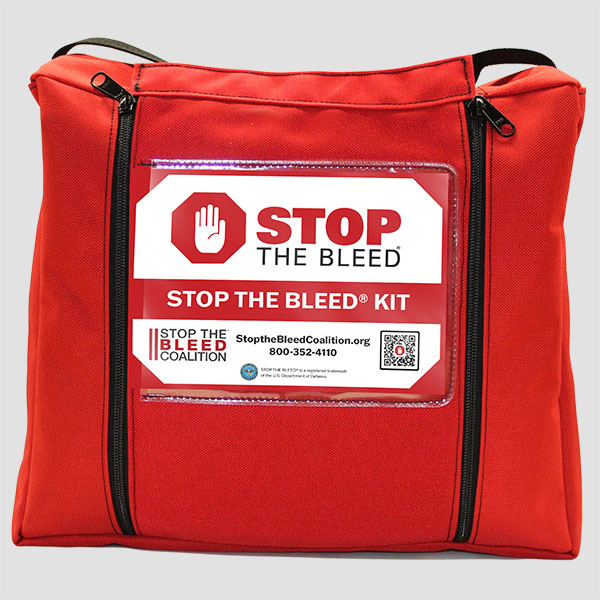Bleeding kits are essential tools used in emergency situations to control bleeding and provide first aid. They typically contain items like:
Dressing and Bandages: Sterile gauze pads, trauma dressings, and elastic bandages for applying pressure.
Tourniquets: Devices designed to apply pressure to a limb to control severe bleeding.
Antiseptic Wipes: For cleaning the area around a wound to reduce the risk of infection.
Medical Tape: To secure dressings in place.
Gloves: Disposable gloves to protect both the responder and the victim.
Scissors: To cut clothing or dressings as needed.
Instructions: Guidelines for proper use of the kit and how to manage bleeding.
It's important for individuals and organizations to keep these kits well-stocked and easily accessible, especially in environments where injuries are more likely to occur, such as workplaces, schools, or outdoor activities. Regularly check expiration dates and restock items as needed. Would you like to know more about specific components or how to use them?

Having a bleeding kit in your business offers several important benefits:
Immediate Response: Quick access to a bleeding kit allows for immediate first aid in case of an injury, potentially saving lives or preventing further harm.
Compliance and Safety: Many industries are required to have first aid supplies on hand. Having a bleeding kit helps ensure compliance with occupational health and safety regulations.
Employee Confidence: Knowing that there are supplies available for emergencies can boost employee morale and confidence in the workplace.
Reduced Severity of Injuries: Prompt treatment can help control bleeding and reduce the severity of injuries, leading to better outcomes and quicker recovery.
Training Opportunities: Having a bleeding kit can encourage first aid training among employees, creating a more safety-conscious workplace.
Risk Mitigation: It demonstrates a commitment to safety, potentially reducing the risk of liability in case of an accident.
Preparedness for Emergencies: It prepares the business for a variety of emergencies, from minor injuries to more serious incidents, fostering a culture of readiness.
Enhanced Reputation: Businesses that prioritize safety are often viewed more favorably by clients, customers, and potential employees.
Investing in a bleeding kit is a proactive step towards ensuring workplace safety and readiness for emergencies. Would you like tips on how to implement this in your business?

Installing bleeding kits in hotels is a proactive step toward ensuring guest and staff safety. Here are some key considerations and steps for implementation:
1. Assess Risk Areas
Identify high-risk areas such as kitchens, pools, gyms, and event spaces where injuries are more likely to occur.
2. Choose Appropriate Kits
Select bleeding kits that are suitable for your hotel's needs. Consider including items like tourniquets, sterile dressings, and gloves.
3. Strategic Placement
Position kits in easily accessible areas, clearly marked for visibility. Consider locations like:
Reception desks
Housekeeping areas
Employee break rooms
Near first aid stations
4. Training Staff
Provide training for staff on how to use the kits effectively. This can include:
Basic first aid training. We provide free CPR training






